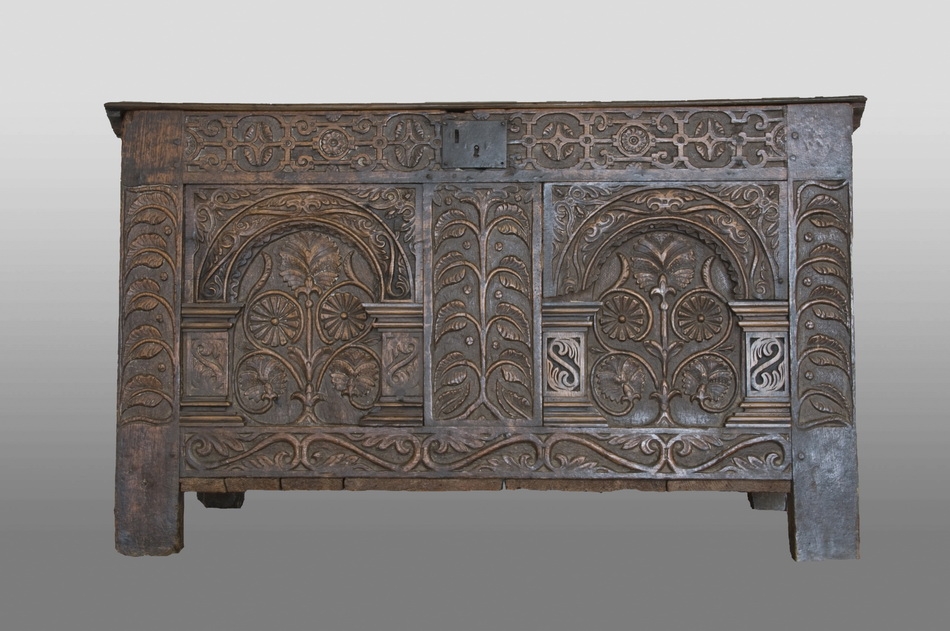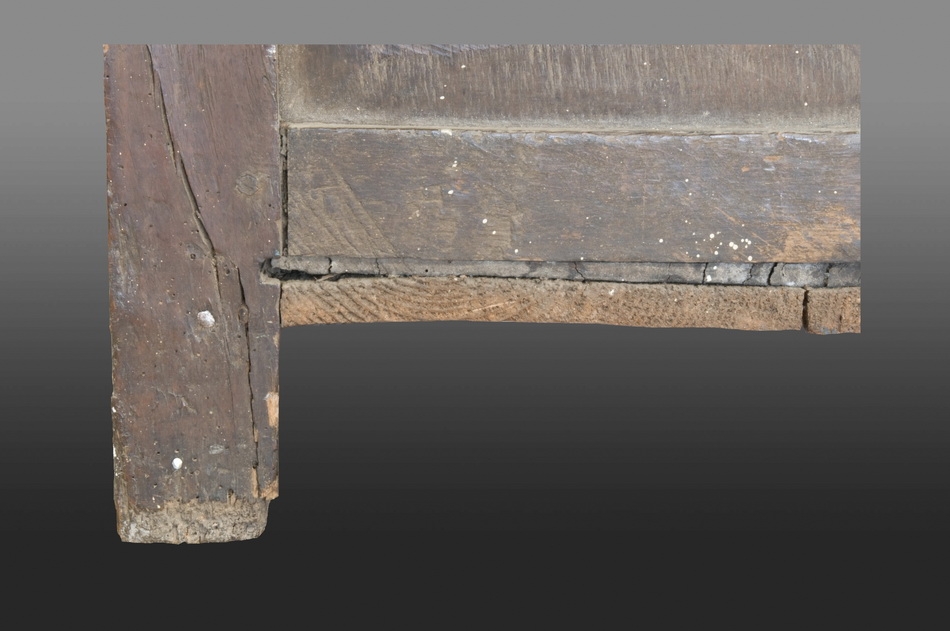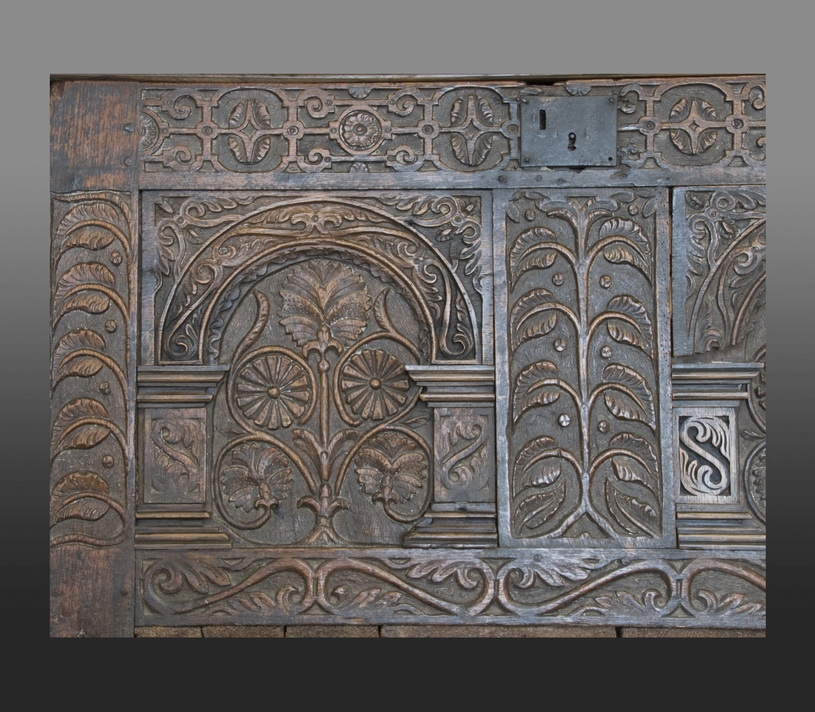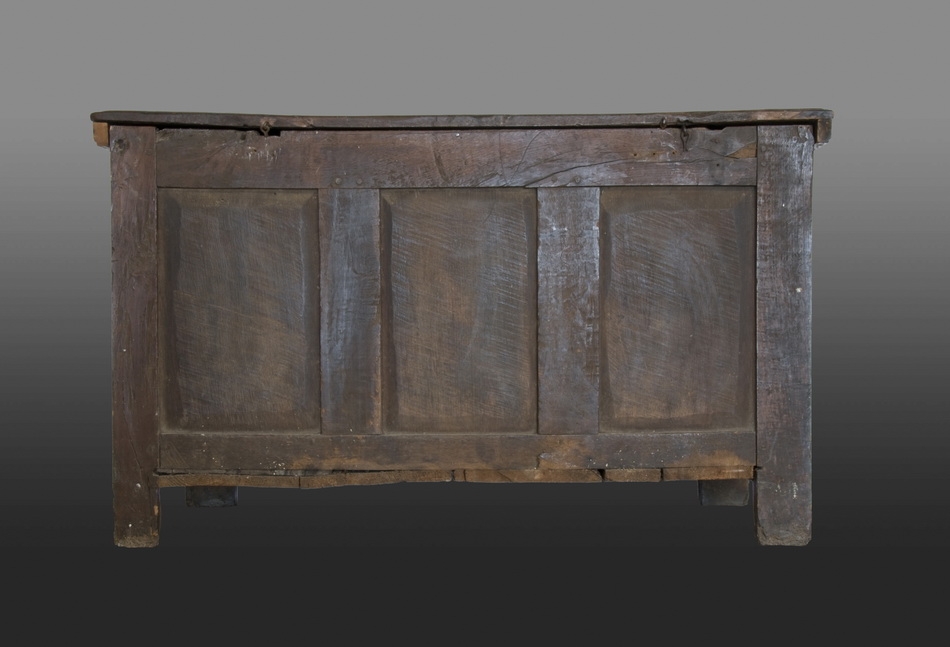James I East Devon chest
17th century
Exeter, Devon
W 46.5" × H 27.75" × D 21"
Stock # Ex4
SOLD
This chest begins a line of objects that represent the direct evolution which led to the furniture-making practices of Thomas Dennis. It may be the work of a joiner within the same workshop in which Dennis apprenticed, but active perhaps two generations earlier. All of the primary elements of Dennis approach to carving design are present on this chest. It features the running bands of adorst, feathery s-scrolls, deeply modeled asymmetric leaves with gouged accents, pseudo-architectural arcades flanked by scrolled spandrels carved in the corners, and de Vries-derived formalized strapwork. The most important point of resonance between the chest and its New England descendants is the composition of the panels. A vertical stem is centred upon a quadripartite configuration of foliate rosettes and segmented flowerheads. A large segmented flowerhead attached to a trefoil motif emerges at the top of the stem. The same basic arrangement appears on numerous chests produced by Thomas Dennis and descendent artisans in the New England workshop, including the joined great chair (Bowdoin College Museum of Art) which descended in the Dennis family and a chest constructed for prosperous Ipswich, Massachusetts residents John and Margaret Staniford and dated 1676 (Winterthur Museum). The ornamental parallels between the chest and the work of the Dennis shop are reinforced by a subtle structural detail that, although appearing on all objects attributed to Dennis himself, is not known on any other example of English joined furniture. The original bottom boards (now lost) were positioned front-to-back, with the edges of the outermost boards inserted in small grooves or cut in the inner edges of the back stiles at the level of the lower back rail.
Condition
Bottom boards and hinges replaced; alterations to lid and interior.





